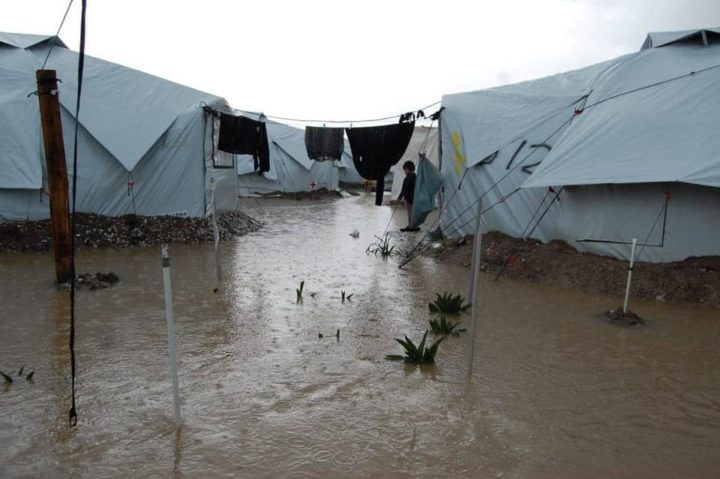Europe is thought of by many refugees escaping persecution, war, poverty, and violence as a place of safety, of Human Rights, of protection, security, and kindness. These narratives are further supported by the rhetoric of the European Commission that presents Europe as a place of ‘respect for human dignity, freedom, equality, rule of law, human rights…values at the core of our European Union’. Yet these are often not the conditions those seeking protection face upon arrival, where they discover that Europe is, for many people, none of these things.
In the European Parliament Plenary on the humanitarian situation of refugees and migrants at the EU’s external borderson 19 January 2021, it was raised by numerous speakers that every winter we find ourselves having the same conversations about the conditions facing refugees at Europe’s borders. The provision of shelter, food and support is frighteningly inadequate across a number of countries, stories of pushbacks both at sea and at land borders speak of refugee’s lives being put at risk, and the failure of European governments to provide assistance that further endangers human life.
In January, July, and November of 2019, I visited the island of Samos in Greece which houses a Reception and Identification Centre (RIC) built to house 648 people neighbouring the town of Vathy. I saw for myself the dangers faced by those seeking asylum caused by the weather extremes seen on the island. In January the island faced storms that risked landslides for the people making impermanent lives in the overflowing camp. In July, as the overcrowding worsened people faced dehydration, as well as risks of rat and snake bites as animals could easily penetrate their self-built shelters, often relying on tarpaulins and tents.
In November I was told of unaccompanied minors and lone children forced to sleep in tents with no mattress, at risk of scabies, bed bugs, chickenpox and assault, in the overflow section of the camp as no space remained in the protected shelters set aside for minors travelling alone. Two years later the conditions in the islands in Greece, as well as the camps on the mainland and reception spaces elsewhere in Europe have not improved. The conversation remains just as relevant today as it was 2 years ago and as it was at the height of the so-called ‘refugee crisis’ in 2015.
Following the fire in the Moria RIC on Lesvos in September 2020 a temporary shelter was built that has become known as Moria 2.0. This space, built on the seafront, is exposed to the elements with high winds, flooding and even snowstorms putting peoples lives at risks.
Similarly in Bosnia Herzegovina following the abandonment of the unsafe Lipa camp in December 2020, refugees found themselves in sub-zero temperatures with no shelter and only the limited support that could be brought together by volunteers. Whilst they have now been housed in large, heated tents this is not a sustainable solution to protect human lives and maintain the values of ‘human dignity, human rights and equality’ espoused by the European Union. Whilst BiH is not within the EU it does share a considerable border with Croatia which has led to an increase in refugees relying on it as a transit path following the closures and increased securitisation of other EU borders. As a result, the Bosnia relies on EU funding as a part of its response to migration management. Moria and Lipa, however, are not the only spaces where basic rights are not being met.
Samos has also seen a number of disasters that have further put lives at risk over the winter period 2020-2021, with fires, an earthquake and freezing winter temperatures creating a situation in which shelter is far from adequate and people are at genuine risk of freezing to death. The European Commission stated in 2018 that reception facilities for refugees should ‘provide shelter and accommodation, catering, health care, transportation at hotspots, ensuring … healthy and safe living conditions for the target group’. It is now 2021 and these conditions are still not reflected in the reality on the ground. In fact, as I have argued with colleagues elsewhere camps and RICs can be viewed as the ‘badlands’, not spaces suitable for ensuring the dignified support of human beings. Whilst State and international actors fail again and again to properly support people, grassroots NGOs continue to fill these gaps.
As temperatures continue to drop, putting people’s lives at risk, refugee support groups on the Greek island have opened their community centres and classrooms for those most at risk. Providing them with camp beds, blankets, and warm space for the night. Yet in spaces like these, spaces rather than people, that are inherently vulnerable, there is no easy way to understand or recognise who is most at risk and there will always be others who slip through the cracks when grassroots organisations are required to do the role that should be done by the State. Let us also be mindful of the fact that all of this is playing out against the backdrop of a global pandemic that only serves to worsen the inequalities faced by people crossing borders to find safety.
For the European Union to live up to the values it presents, these values can not only be applied to its own citizens, to those at the centre, whilst those trapped in the margins, at the borders of Europe, continue to suffer. They cannot simply be words, speeches that are given in Plenary sessions but that do not translate into real and effective change. We cannot continue to have the same conversations every winter as more people’s lives are put at risk.










